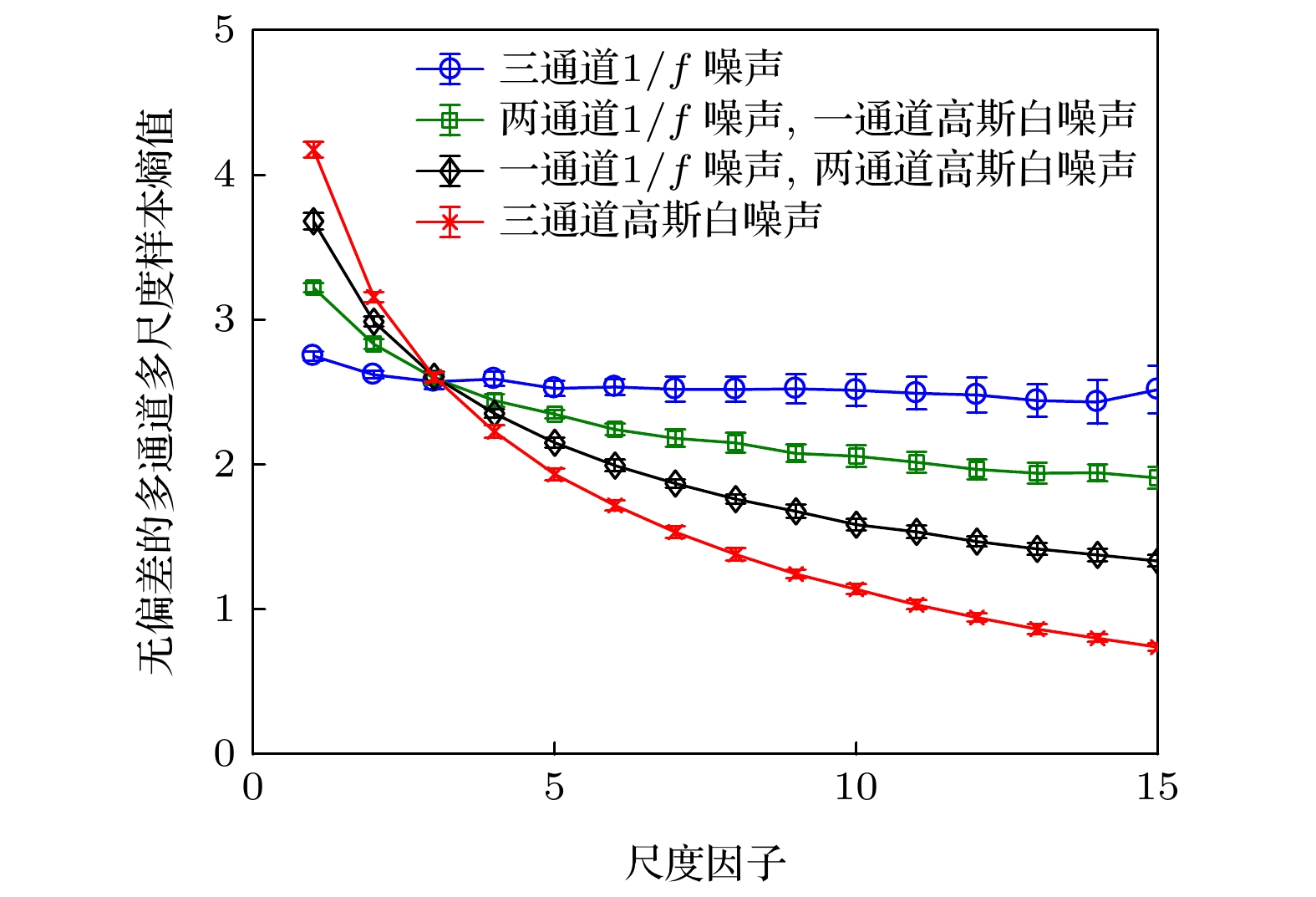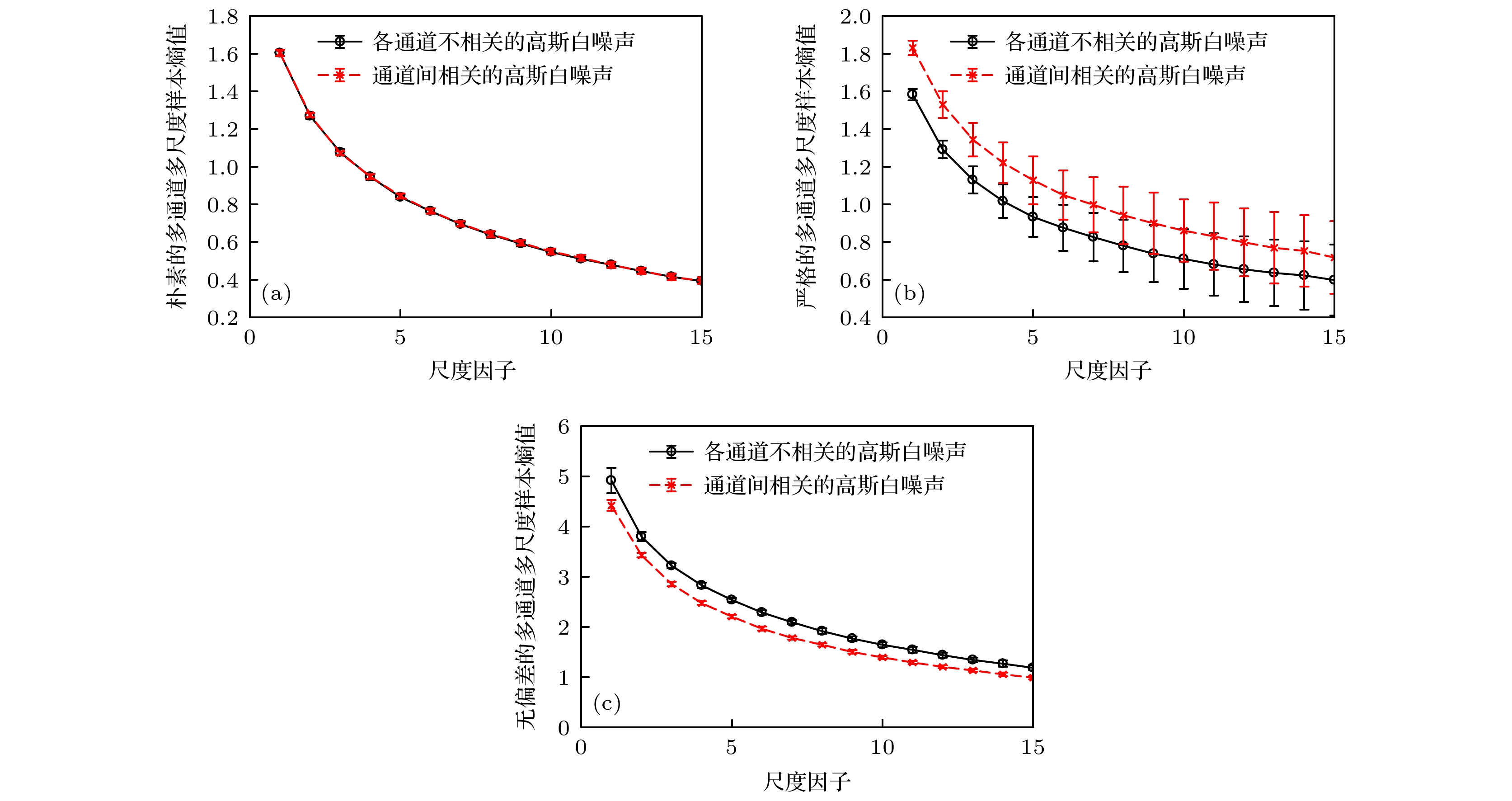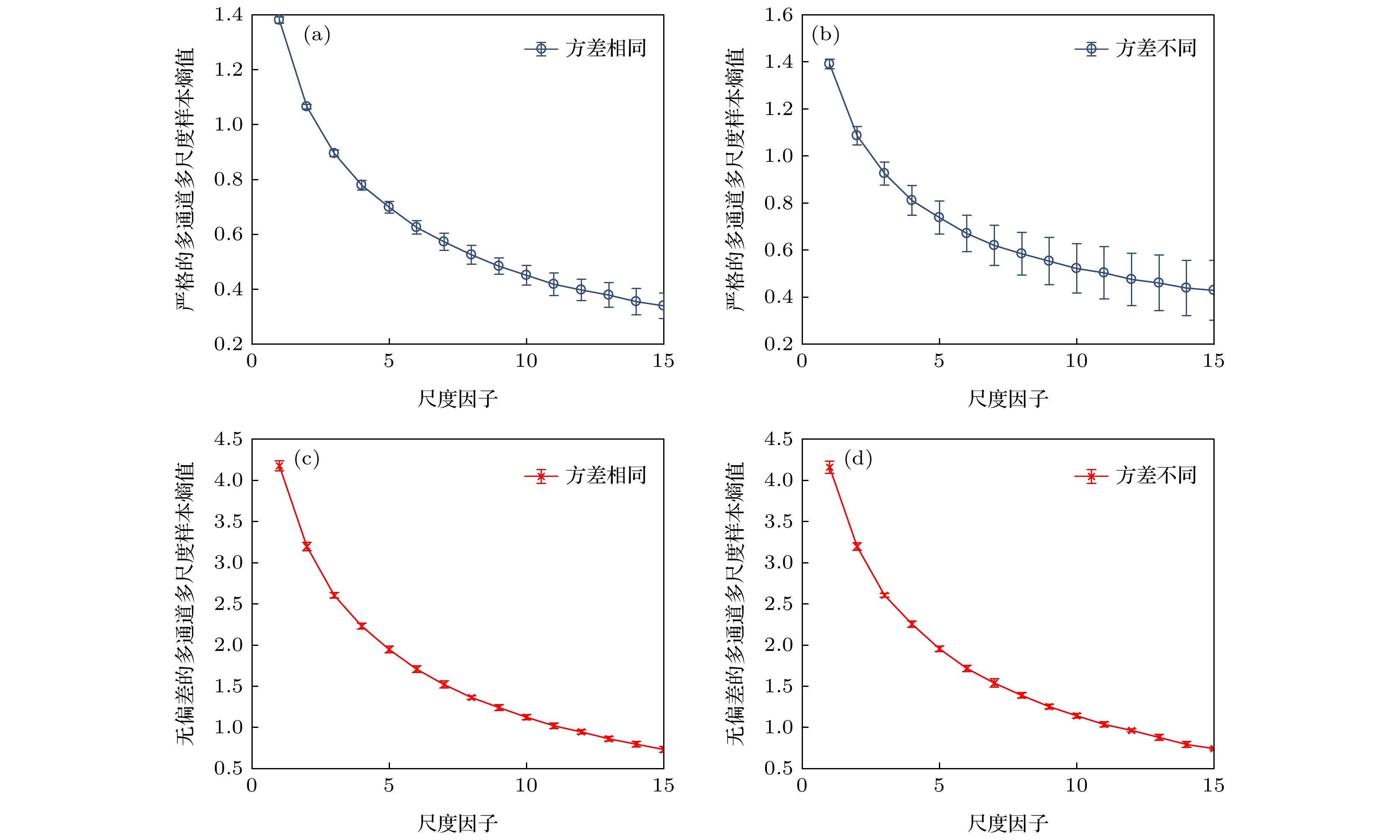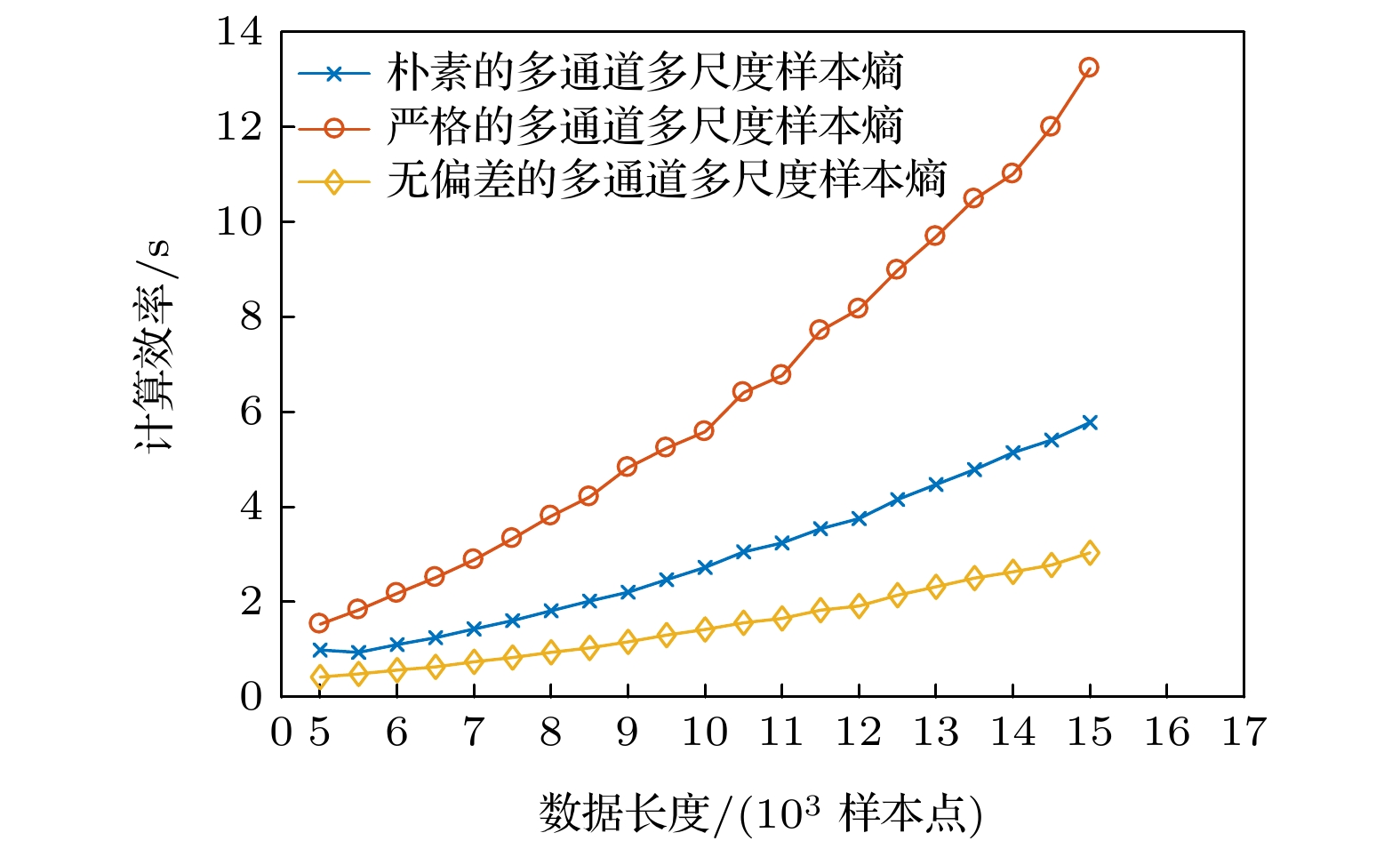-
多通道数据采集技术的发展为复杂系统非线性动力学特性研究提供了更加丰富的先验信息. 然而传统的非线性特征量只能处理单通道数据, 无法直接提取多通道数据的非线性特征. 近年来, 有学者对多尺度样本熵算法进行了一般化处理, 提出了多通道多尺度样本熵算法. 该算法不仅可以对多通道数据整体的复杂度进行表征, 还可以有效提取通道内和通道间隐含的相关性信息. 但是, 该算法缺乏相应的理论支撑, 在实际应用中无法兼顾性能和稳定性. 针对以上问题, 本文提出了一种无偏差的多通道多尺度样本熵算法, 并利用概率论从理论上分析了多通道多尺度样本熵算法不稳定以及性能差的原因. 后续的仿真实验证明改进后的算法不但可以有效地提取通道内和通道间的相关性信息, 同时在处理复杂数据时表现出了良好的稳定性. 该算法为诸如模糊熵、排列熵等非线性特征量的算法一般化提供了思路和理论依据.The development of multi-channel data acquisition techniques has provided richer prior information for studying the nonlinear dynamic characteristics of complex systems. However, conventional nonlinear feature extraction algorithms prove unsuitable in the context of multi-channel data. Previously, the multivariate multiscale sample entropy (MMSE) algorithm was introduced for multi-channel data analysis. Although the MMSE algorithm generalized the multiscale sample entropy algorithm, presenting a novel method for multidimensional data analysis, it remains deficient in theoretical underpinning and suffers from shortcomings, such as missing cross-channel correlation information and having biased estimation results. In this paper, unbiased multivariate multiscale sample entropy algorithm (UMMSE) is proposed. UMMSE increases the embedding dimension from M to M + p. This increasing strategy facilitates the reconstruction of a deterministic phase space. By virtue of theoretical scrutiny grounded in probability theory and subsequent experimental validation, this paper illustrates the algorithm's effectiveness in extracting inter-channel correlation information through the integration of cross-channel conditional probabilities. The computation of similarities between sample points across different channels is recognized as a potential source of bias and instability in algorithms.Through simulation experiments, this study delineates the parameter selection range for the UMMSE algorithm. Subsequently, diverse simulation signals are employed to showcase the UMMSE algorithm’s efficacy in extracting both within-channel and cross-channel correlation information. Ultimately, this paper demonstrates that the new algorithm has the lowest computational cost compared with traditional MMSE algorithms.
[1] Fowler A C, Gibbon J D, McGuinness M J 1982 Physica D 4 139
 Google Scholar
Google Scholar
[2] Gao Z, Jin N 2009 Chaos 19 033137
 Google Scholar
Google Scholar
[3] López C, Naranjo á, Lu S, Moore K 2022 J. Sound Vib. 528 116890
 Google Scholar
Google Scholar
[4] Wang Q B, Yang Y J, Zhang X 2020 Chaos, Solitons Fractals 137 109832
 Google Scholar
Google Scholar
[5] Kunze M 2007 Non-Smooth Dynamical Systems (Heidelberg: Springer Berlin) pp63–140
[6] Zarei A, Asl B M 2018 IEEE J. Biomed. Health 23 1011
 Google Scholar
Google Scholar
[7] He H, Tan Y 2017 Appl. Soft Comput. 55 238
 Google Scholar
Google Scholar
[8] 刘秉正, 彭建华 2004 非线性动力学(北京: 高等教育出版社) 第301—466页
Liu B Z, Peng J H 2004 Nonlinear Dynamics (Beijing: Higher Education Press) pp301–466
[9] Cranch G A, Nash P J, Kirkendall C K 2003 IEEE Sens. J. 3 19
 Google Scholar
Google Scholar
[10] Zhu X, Murch R D 2002 IEEE Trans. Commun. 50 187
 Google Scholar
Google Scholar
[11] Van Trees H L 2002 Optimum Array Processing: Part IV of Detection, Estimation, and Modulation Theory (New York: John Wiley and Sons)pp17-230
[12] Eren F, Pe'eri S, Thein M W, Rzhanov Y, Celikkol B, Swift M R 2017 Sensors-Basel 17 1741
 Google Scholar
Google Scholar
[13] Shi Q Q, Li W, Tao R, Sun X, Gao L R 2019 Remote Sens-Basel 11 419
 Google Scholar
Google Scholar
[14] Xing X W, Ji K F, Zou H X, Chen W T, Sun J X 2013 IEEE Geosci. Remote Sens. Lett. 10 1562
 Google Scholar
Google Scholar
[15] Wang Z Y, Yao L G, Cai Y W 2020 Measurement 156 107574
 Google Scholar
Google Scholar
[16] Thuraisingham R A, Gottwald G A 2006 Physica A 366 323
 Google Scholar
Google Scholar
[17] Li W J, Shen X H, Li Y A 2019 Entropy-Switz 21 793
 Google Scholar
Google Scholar
[18] Pincus S M 1991 P. Natl. Acad. Sci. USA 88 2297
 Google Scholar
Google Scholar
[19] Richman J S, Moorman J R 2000 Am. J. Physiol-Heart. C 27 H2039
[20] Bandt C, Pompe B 2002 Phys. Rev. Lett 88 174102
 Google Scholar
Google Scholar
[21] Costa M, Goldberger A L, Peng C K 2005 Phys. Rev. E 71 021906
 Google Scholar
Google Scholar
[22] Ahmed M U, Mandic D P 2011 Phys. Rev. E 84 061918
 Google Scholar
Google Scholar
[23] Li Y, Tang B, Jiao S, Zhou Y 2024 Chaos, Solitons Fractals 179 114436
 Google Scholar
Google Scholar
[24] Zhao C, Sun J, Lin S, Peng Y 2022 Measurement 195 111190
 Google Scholar
Google Scholar
[25] Cao L Y, Mees A, Judd K 1998 Physica D 121 75
 Google Scholar
Google Scholar
[26] Zhang Y C 1991 J. Phys. I France 1 971
 Google Scholar
Google Scholar
[27] Takens F 1980 Dynamical Systems and Turbulence (Heidelberg: Springer Berlin) p366
-
图 4 严格算法与无偏差的多通道多尺度样本熵算法稳定性分析 (a)通道间方差相同时的严格算法结果; (b)通道间方差不同时的严格算法结果; (c)通道间方差相同时的无偏差算法结果; (d)通道间方差不同时的无偏差算法结果
Fig. 4. The robustness analysis for the different multivariate entropy algorithms: (a) Rigorous MMSE result for the same variance of each channel; (b) rigorous MMSE result for the different variance of each channel; (c) unbiased multivariate multiscale sample entropy results for the same variance of each channel; (d) unbiased multivariate multiscale sample entropy result for the different variance of each channel.
表 1 熵算法中涉及的事件及对应的符号
Table 1. Events involved in the entropy algorithm
符号 事件 A 通道1中长度为$m_{1}$的子序列相似 B 通道2中长度为$m_{2}$的子序列相似 C 通道1中长度为$m_{1}$的子序列在
第$m_{1}+1$个样本点依然相似D 通道2中长度为$m_{2}$的子序列在
第$m_{2}+1$个样本点依然相似表 2 不同的嵌入维数所对应的事件
Table 2. Events corresponding to different embedding dimensions
嵌入维数 可能的结果 $B^{M+i}(r)$ $m_1$ $m_1$ $P({\rm{A}})$ $m_1+1$ $m_1+1$ $P({\rm{AC}})$ M $[m_{1}, m_{2}]$ $P({\rm{AB}})$ $M+1$ $[m_{1}+1, m_{2}]$ $P({\rm{ABC}})$ $[m_{1}, m_{2}+1]$ $P({\rm{ABD}})$ $M+2$ $[m_{1}+1, m_{2}+1]$ $P({\rm{ABCD}})$ -
[1] Fowler A C, Gibbon J D, McGuinness M J 1982 Physica D 4 139
 Google Scholar
Google Scholar
[2] Gao Z, Jin N 2009 Chaos 19 033137
 Google Scholar
Google Scholar
[3] López C, Naranjo á, Lu S, Moore K 2022 J. Sound Vib. 528 116890
 Google Scholar
Google Scholar
[4] Wang Q B, Yang Y J, Zhang X 2020 Chaos, Solitons Fractals 137 109832
 Google Scholar
Google Scholar
[5] Kunze M 2007 Non-Smooth Dynamical Systems (Heidelberg: Springer Berlin) pp63–140
[6] Zarei A, Asl B M 2018 IEEE J. Biomed. Health 23 1011
 Google Scholar
Google Scholar
[7] He H, Tan Y 2017 Appl. Soft Comput. 55 238
 Google Scholar
Google Scholar
[8] 刘秉正, 彭建华 2004 非线性动力学(北京: 高等教育出版社) 第301—466页
Liu B Z, Peng J H 2004 Nonlinear Dynamics (Beijing: Higher Education Press) pp301–466
[9] Cranch G A, Nash P J, Kirkendall C K 2003 IEEE Sens. J. 3 19
 Google Scholar
Google Scholar
[10] Zhu X, Murch R D 2002 IEEE Trans. Commun. 50 187
 Google Scholar
Google Scholar
[11] Van Trees H L 2002 Optimum Array Processing: Part IV of Detection, Estimation, and Modulation Theory (New York: John Wiley and Sons)pp17-230
[12] Eren F, Pe'eri S, Thein M W, Rzhanov Y, Celikkol B, Swift M R 2017 Sensors-Basel 17 1741
 Google Scholar
Google Scholar
[13] Shi Q Q, Li W, Tao R, Sun X, Gao L R 2019 Remote Sens-Basel 11 419
 Google Scholar
Google Scholar
[14] Xing X W, Ji K F, Zou H X, Chen W T, Sun J X 2013 IEEE Geosci. Remote Sens. Lett. 10 1562
 Google Scholar
Google Scholar
[15] Wang Z Y, Yao L G, Cai Y W 2020 Measurement 156 107574
 Google Scholar
Google Scholar
[16] Thuraisingham R A, Gottwald G A 2006 Physica A 366 323
 Google Scholar
Google Scholar
[17] Li W J, Shen X H, Li Y A 2019 Entropy-Switz 21 793
 Google Scholar
Google Scholar
[18] Pincus S M 1991 P. Natl. Acad. Sci. USA 88 2297
 Google Scholar
Google Scholar
[19] Richman J S, Moorman J R 2000 Am. J. Physiol-Heart. C 27 H2039
[20] Bandt C, Pompe B 2002 Phys. Rev. Lett 88 174102
 Google Scholar
Google Scholar
[21] Costa M, Goldberger A L, Peng C K 2005 Phys. Rev. E 71 021906
 Google Scholar
Google Scholar
[22] Ahmed M U, Mandic D P 2011 Phys. Rev. E 84 061918
 Google Scholar
Google Scholar
[23] Li Y, Tang B, Jiao S, Zhou Y 2024 Chaos, Solitons Fractals 179 114436
 Google Scholar
Google Scholar
[24] Zhao C, Sun J, Lin S, Peng Y 2022 Measurement 195 111190
 Google Scholar
Google Scholar
[25] Cao L Y, Mees A, Judd K 1998 Physica D 121 75
 Google Scholar
Google Scholar
[26] Zhang Y C 1991 J. Phys. I France 1 971
 Google Scholar
Google Scholar
[27] Takens F 1980 Dynamical Systems and Turbulence (Heidelberg: Springer Berlin) p366
计量
- 文章访问数: 3881
- PDF下载量: 66
- 被引次数: 0













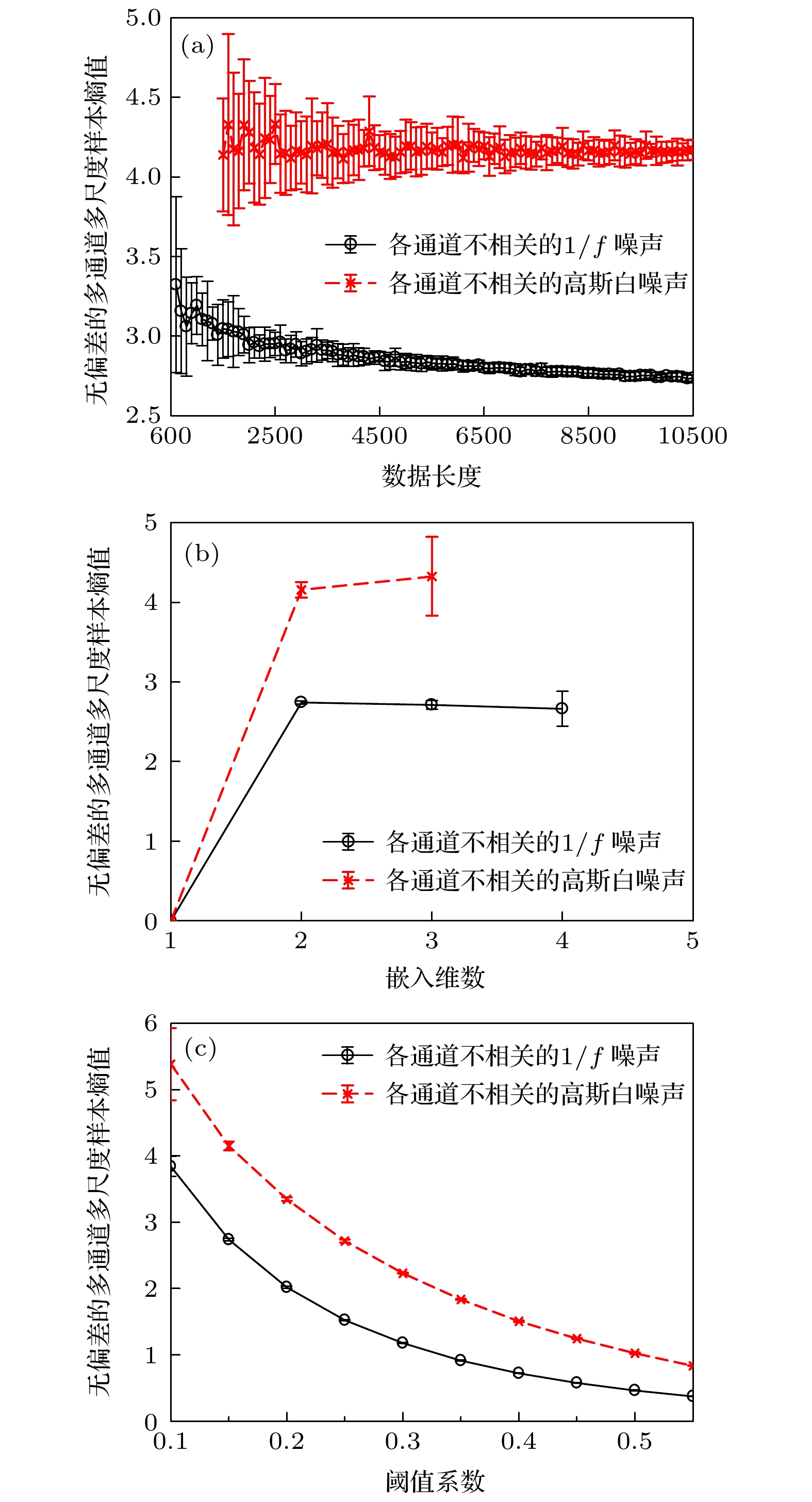
 下载:
下载:
